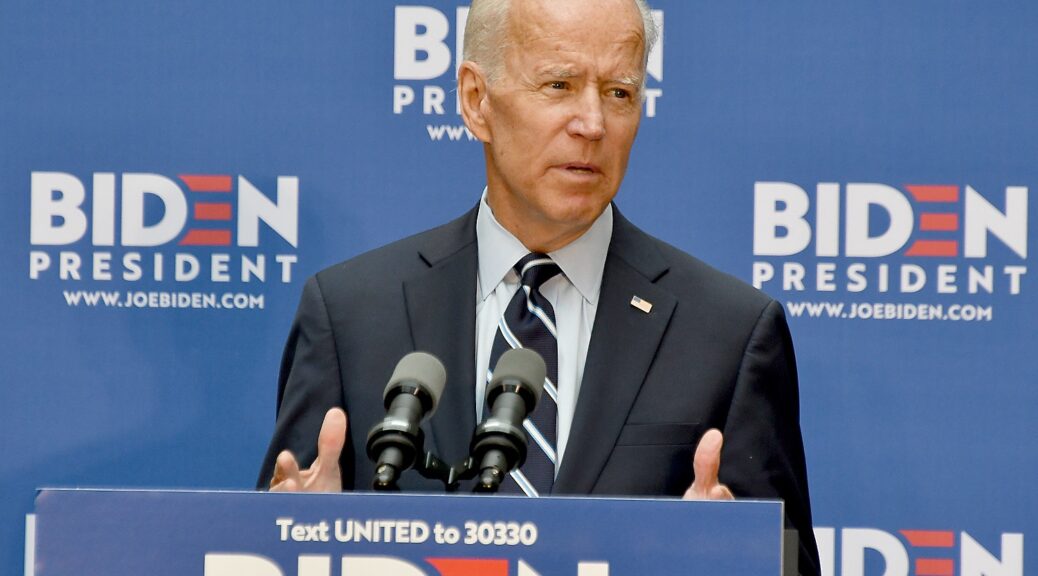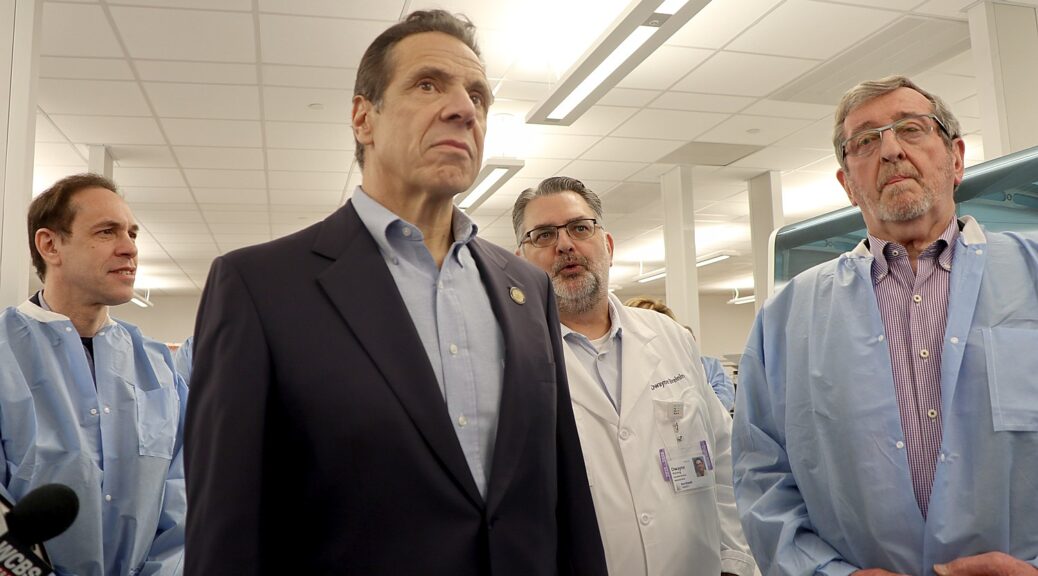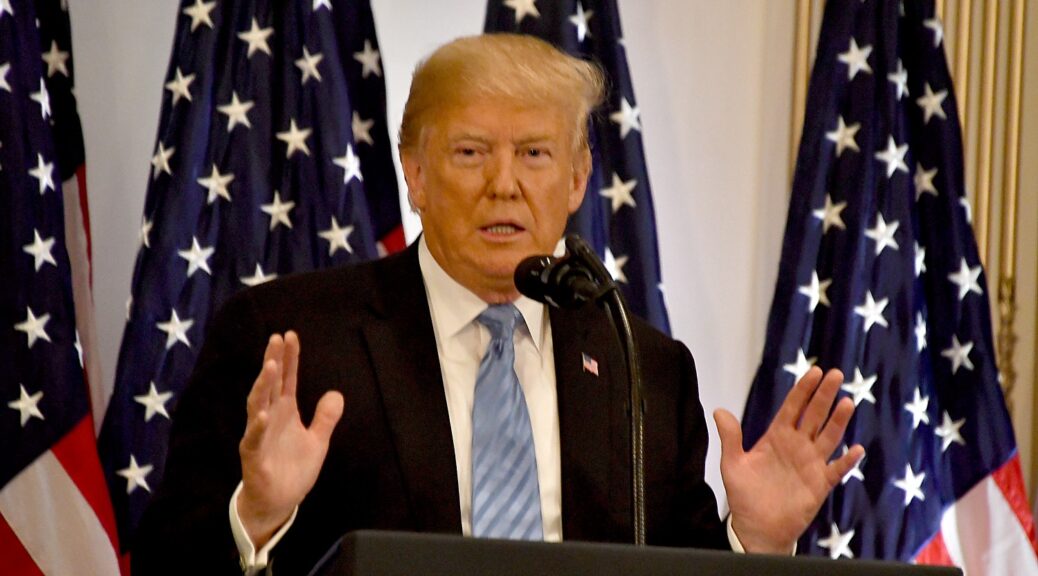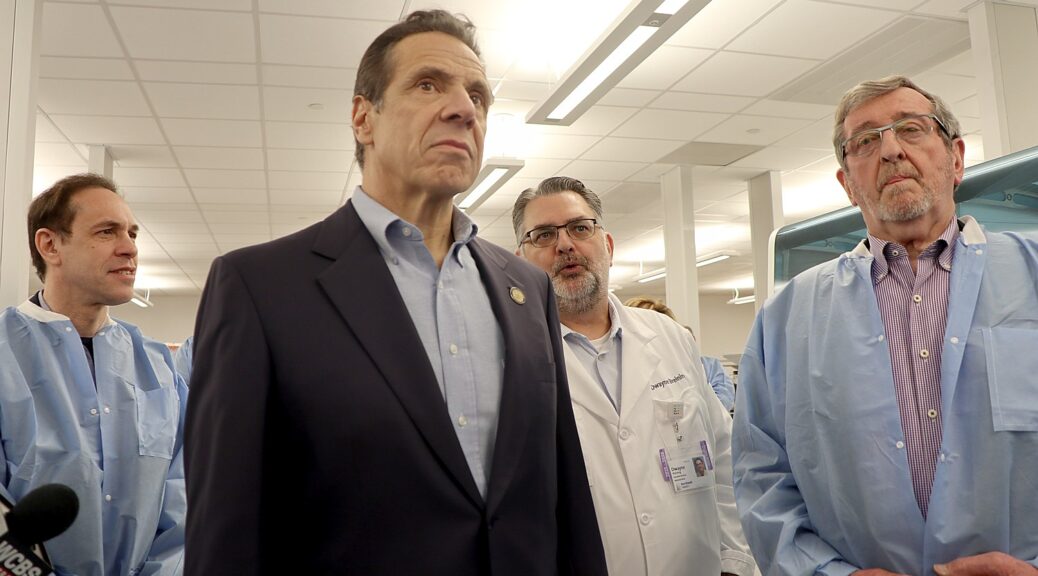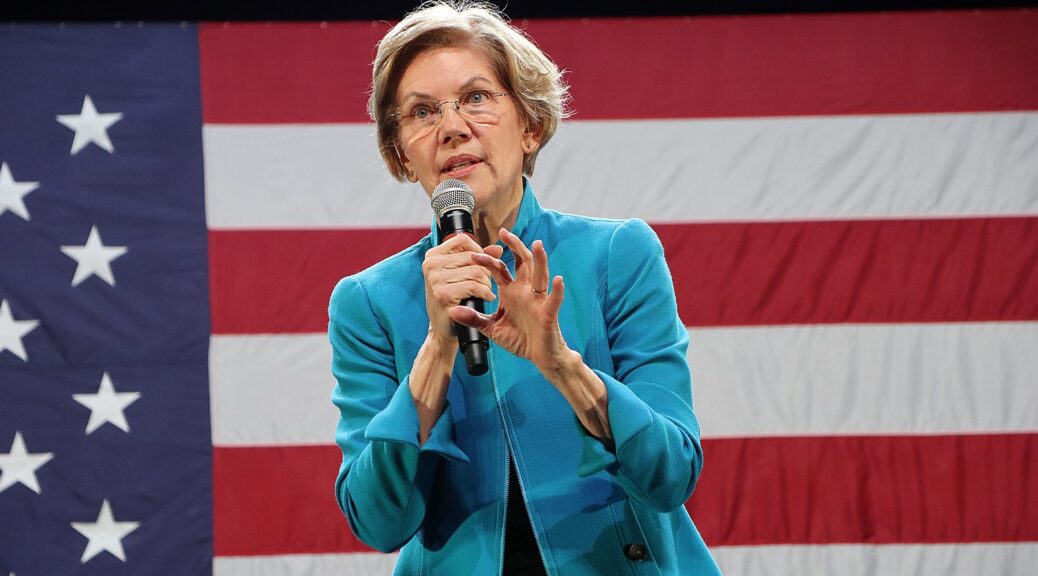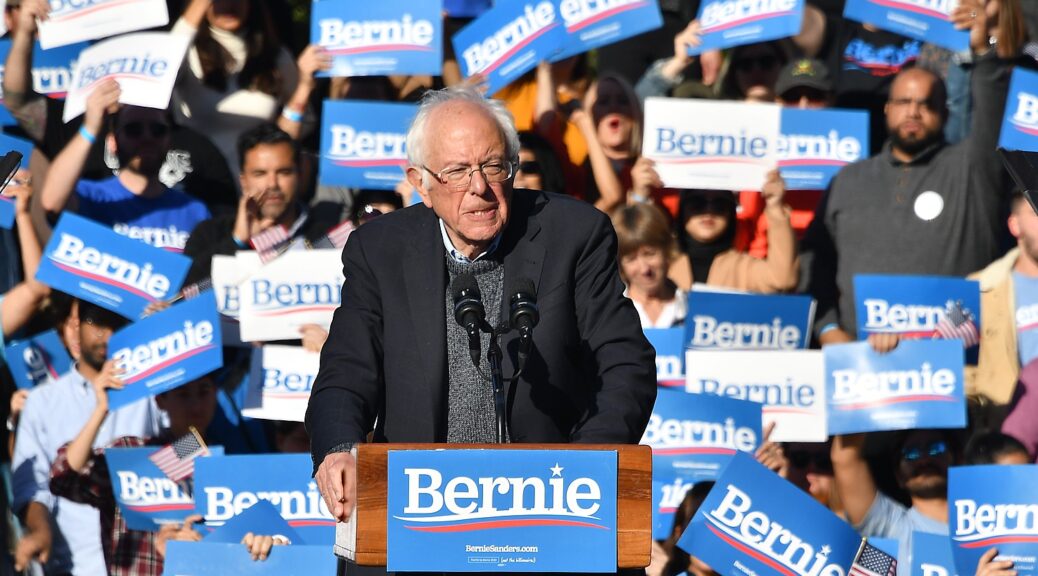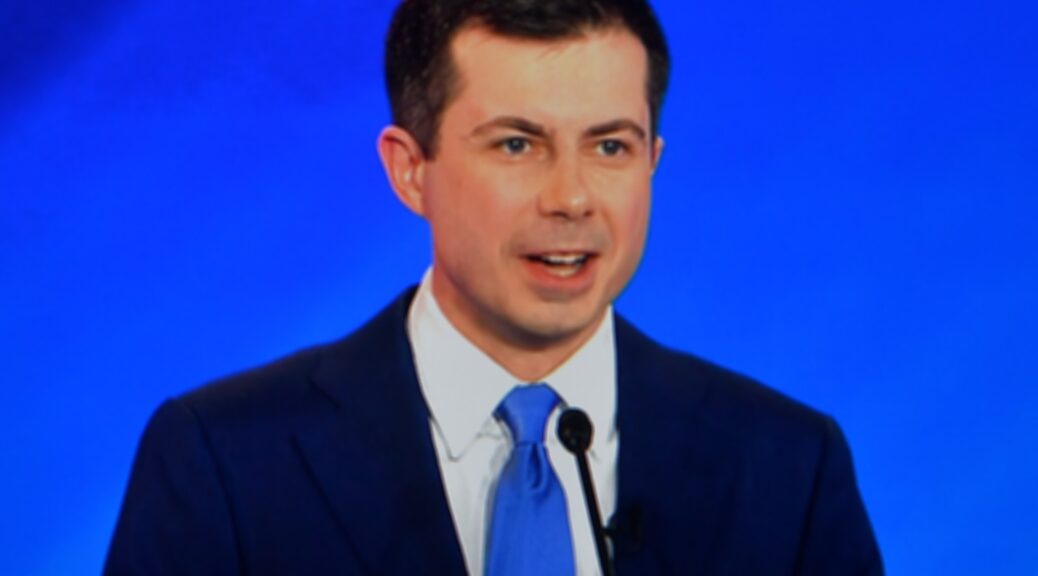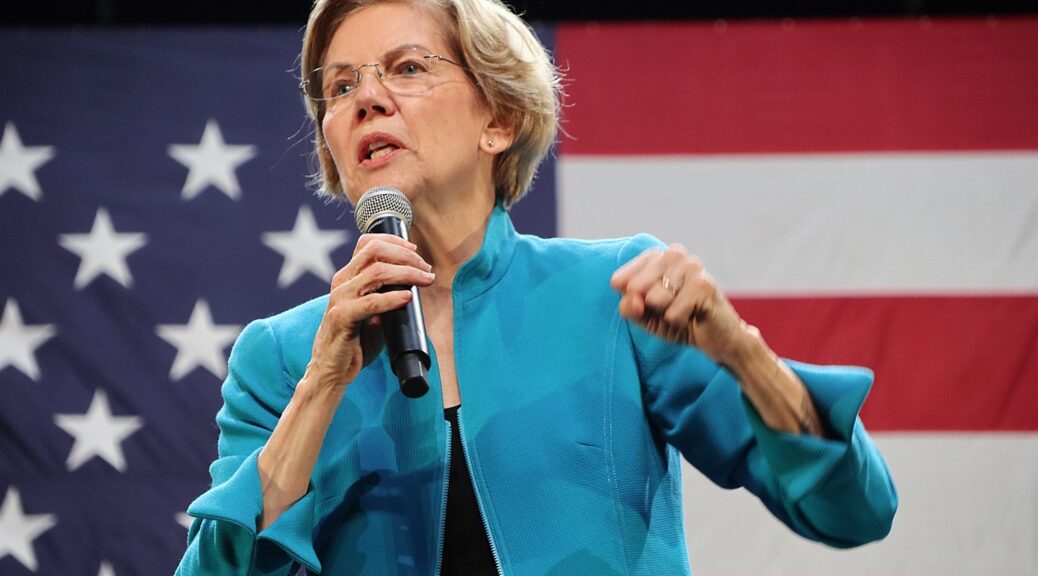
This is the speech on protecting against the health and economic impacts of the coronavirus pandemic that Americans should have heard from the Oval Office:
Remarks by Vice President Joe Biden on Combating Coronavirus (COVID-19)
My fellow Americans:
Today, across the nation, many of us are feeling anxious about the rapid spread of COVID-19, known as the coronavirus, and the threat it poses to our health, our loved ones, and our livelihoods.
I know people are worried, and my thoughts are with all those who are directly fighting this virus — those infected, families that have suffered a loss, our first responders and health care providers who are putting themselves on the line for others. And I’d like to thank those who are already making sacrifices to protect us— whether that’s self-quarantining or cancelling events or closing campuses. Because whether or not you are infected, or know someone who is infected, or have been in contact with an infected person — this will require a national response. Not just from our elected leaders or our public health officials — from all of us.
We all must follow the guidance of health officials and take appropriate precautions — to protect ourselves, and critically, to protect others, especially those who are most at-risk from this disease.
It will mean making some radical changes to our personal behaviors: more frequent and more through handwashing and staying home from work if you are ill, but also altering some deeply-ingrained habits, like handshakes and hugs, and avoiding large public gatherings.
That is why earlier this week, on the recommendation of officials, my campaign cancelled the election night rally we had planned to hold in Cleveland, Ohio. We will also be re-imagining the format for the large-crowd events we had planned in Chicago and Miami in the coming days. And we will continue to assess and adjust how we conduct our campaign as we move forward, and find new ways to share our message with the public, while putting the health and safety of the American people first.
Yesterday, we announced a Public Health Advisory Committee of experts who will counsel our campaign and help guide our decisions on steps to minimize the risk. We will be led by the science.
The World Health Organization has now officially declared COVID-19 a pandemic. Downplaying it, being overly dismissive, or spreading misinformation will only hurt us and further advantage the spread of the disease. But neither should we panic or fall back on xenophobia. Labeling COVID-19 a “foreign virus” does not displace accountability for the mismanagement that we have seen from the Trump Administration.
Let me be crystal clear: the coronavirus does not have a political affiliation. It will infect Republicans and Democrats alike. It will not discriminate based on national origin, race, gender, or zip code. It will touch people in positions of power and the most vulnerable in our society.
A wall will not stop it. Banning all travel from Europe, or any other part of the world, may slow it — but as we have seen — it will not stop it. And travel restrictions based on favoritism and politics — rather than risk — will be counterproductive. This disease could impact every nation and any person on the planet. And we need a plan about how we are going to aggressively manage it here at home.
The American people have the capacity to meet this moment. We will face this with the same spirit that has guided us through previous crises. We will come together as a nation. We will look out for one another and do our part as citizens. We have to harness the ingenuity of our scientists and the resourcefulness of our people. And we have to lead the world to drive a coordinated global strategy, not shut ourselves off from it.
Protecting the health and safety of the American people is the most important job of any president — and unfortunately, this virus has laid bare the severe shortcomings of the current Administration. Public fears are being compounded by a pervasive lack of trust in this president, fueled by his adversarial relationship with the truth.
Our government’s ability to respond effectively has been undermined by the hollowing-out of our agencies and the disparagement of science. And our ability to drive a global response is dramatically undercut by the damage Trump has done to our credibility and our relationships around the world.
We have to get to work immediately to dig ourselves out of this hole. That is why, today, I am releasing a plan to combat and overcome the coronavirus. The full details are on JoeBiden.com laying out the immediate steps we must take to deliver: A decisive public health response to curb the spread of this disease and provide treatment to those in need; and a decisive economic response that delivers real relief to American workers, families, and small businesses — and protects the economy as a whole.
I offer it as a roadmap, not for what I will do as president 10 months from now, but for the leadership I believe is required right now, in this moment. President Trump is welcome to adopt it today.
The core principle is simple: public health professionals must be the ones making our public health decisions and communicating with the American people. It would be a step toward reclaiming public trust and confidence in the United States government and toward stopping the fear and chaos that can overtake communities faster than this pandemic. And it’s critical to mounting an effective national response that will save lives, protect our front-line health workers, and slow the spread of this virus.
First, anyone who needs to be tested based on medical guidelines, should be tested—at no charge. The Administration’s failure on testing is colossal. It is a failure of planning, leadership, and execution. The White House should measure and report each day how many tests were ordered, how many tests have been completed, and how many have tested positive. By next week, the number of tests should be in the millions, not the thousands. We should make sure every person in a nursing home, a senior center, or a vulnerable population has easy access to a test.
We should establish hundreds of mobile testing sites — at least 10 per state — and drive-thru testing centers to speed testing and protect health care workers.
The CDC, private labs, universities, and manufacturers should be working in lock-step to get this done, and get it done right. No effort should be spared. No excuses should be made. Tests should be available to all who need them and the government should stop at nothing to make that happen.
We must know the true extent of this outbreak so we can map it, trace it, and contain it. Nor should we hide the true number of infections in hopes of protecting political interests or the stock market. The markets will respond to strong, steady, capable leadership that addresses the root of the problem, not efforts to cover it up.
Second, we need to surge our capability to both prevent and treat the coronavirus, and prepare our hospitals to deal with an influx of those needing care. This means not just getting out the testing kits and processing them quickly, but making sure communities have the hospital beds, the staff, the medical supplies, and the personal protective equipment necessary to treat patients.
The president should order FEMA to prepare the capacity with local authorities to establish temporary hospitals with hundreds of beds on short notice. The Department of Defense should prepare for the potential deployment of its resources to provide medical facility capacity and logistical support. A week from now, a month from now, we could need an instant, 500-bed hospital to isolate and treat patients in any city in the country. We can do that — but we aren’t ready yet, and the clock is ticking.
As we take these steps, state, federal, and local authorities need to ensure that there is accurate, up-to-date information easily available to every American so everyone can make an informed decision about when to get tested, when to self-quarantine, and when to seek medical treatment. And the federal government should provide states and municipalities with clear guidance about when to trigger more aggressive mitigation policies, such as closing schools.
Third, we need to accelerate the development of treatments and a vaccine. Science takes time. It will still be many months before we have a vaccine that can be proven safe for public use and produced in sufficient quantity to make a difference. Therapeutics can and should come sooner. That will save lives. We passed the Cures Act in 2016 to accelerate work at the National Institutes of Health, but now it must have every available resource to speed the process along.
We must fast-track clinical trials within the NIH, while closely coordinating with the Food and Drug Administration on trial approvals, so that the science is not hindered by the bureaucracy. And, when we do have a vaccine ready to go, it should also be made widely available, free of charge.
We should also immediately restore the White House National Security Council Directorate for Global Health Security and Biodefense –with a full-time, dedicated coordinator to oversee the response.
Our Administration created that office to better respond to future global health threats after the Ebola crisis in 2014.
It was designed for exactly this scenario.
President Trump eliminated the office two years ago.
Here’s the bottom line: we have to do what is necessary to beat this challenge sooner rather than later.
I assure you, if we wait for it to worsen then scramble to catch up, the human and economic toll will be far greater and last far longer.
Congress gave the Administration $8 billion last week to fight the virus. We need to know exactly where that money is going, how quickly it is going out the door, and how it is being spent.
This brings me to the second half of this challenge — the economic dislocation the coronavirus will cause in our country.
We must do whatever it takes, spend whatever it takes, to deliver relief for our families and ensure the stability of our economy.
Taking immediate, bold measures to help Americans who are hurting economically right now.
It means we will need bigger and broader measures to shore up economic demand, protect jobs, keep credit flowing to our job creators, and make sure we have the economic fire power we need to weather this storm and get our people and this economy back to full strength as soon as possible.
This crisis will hit everyone, but it will hit folks who live paycheck-to-paycheck the hardest, including working people and seniors.
Another tax cut to Google or Goldman or millionaires won’t get the job done.
Indiscriminate corporate tax subsidies won’t effectively target those who really need help.
We need to place our focus on those who will struggle just to get by.
People are already losing jobs — we need to replace their wages.
That includes workers in the gig economy who lack unemployment insurance.
Parents who are already struggling with childcare costs — we need to give them relief.
Children who rely on school lunches will need food.
And schools will need help ensuring children who do not have easy access to computers can still learn if their schools close.
People who have difficulty paying their rent or mortgage because they’ve been laid off or had their hours cut back — we need to help them stay in their homes.
Small businesses that will be devastated as customers stay home and events are canceled — we need to make sure they have access to interest-free loans.
It is a national disgrace that millions of our fellow citizens do not have a single day of paid sick leave.
We need — both — a permanent plan for paid sick leave and an emergency plan for everyone who needs it due to the outbreak.
Beyond these national measures, my plan also calls for the creation of a State and Local Emergency Fund to make sure governors, mayors, and local leaders who are battling coronavirus on the ground have the resources necessary to meet this crisis head on.
These funds could be used at the discretion of local leaders for whatever they most need: expanding critical health infrastructure, hiring additional health care and emergency service personnel, or cushioning the wider economic blow this virus will cause our communities.
We need smart, bold, and compassionate leadership that will help contain the crisis, reduce hardship to our people, and help our economy rebound.
But let me be clear: this is just a start.
We must prepare now to take further decisive action, including direct relief, that will be large in scale and focused on the broader health and stability of our economy.
But we can only protect the health of our economy, if we do everything in our power to protect the health of our people.
The last point I want to make today is this — we will never fully solve this problem if we are unwilling to look beyond our own borders and engage fully with the world.
A disease that starts any place on the planet can be on a plane to any city on earth a few hours later.
So we have to confront coronavirus everywhere.
We should be leading a coordinated, global response, just as we did for Ebola, that draws on the incredible capability of the U.S. Agency for International Development and our State Department to assist vulnerable nations in detecting and treating coronavirus wherever it is spreading.
We should be investing in rebuilding and strengthening the Global Health Security Agenda, which we launched during our Administration, specifically to mobilize the world against the threat of new infectious diseases.
It can be hard to see the concrete value of this work when everything seems well with the world.
But by cutting our investments in global health, this Administration has left us woefully ill-prepared for the exact crisis we now face.
No President can promise to prevent future outbreaks.
But I can promise you that when I’m president, we will prepare better, respond better, and recover better.
We will lead with science.
We will listen to experts and heed their advice.
We will rebuild American leadership and rally the world to meet global threats.
And I will always, always tell you the truth.
That is the responsibility of a president.
That is what is owed to the American people.
Now, and in the difficult days that still lie ahead, I know that this country will summon our spirit of empathy, decency, and unity.
Because, in times of crisis, Americans stand as one.
Volunteers raise their hands to help.
Neighbors look out for neighbors.
Businesses take care of their workers.
So we will meet this challenge — together.
Thank you all.

